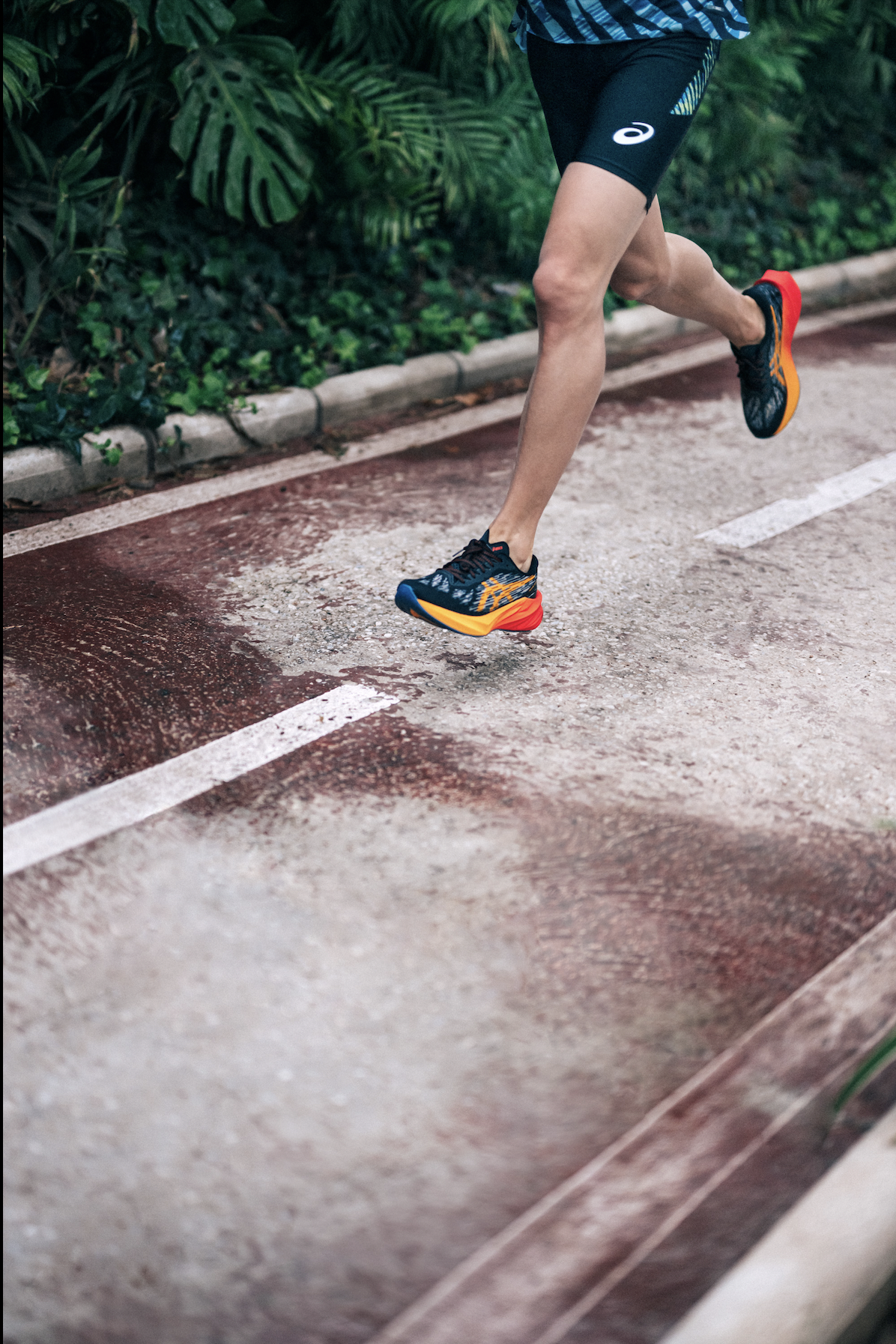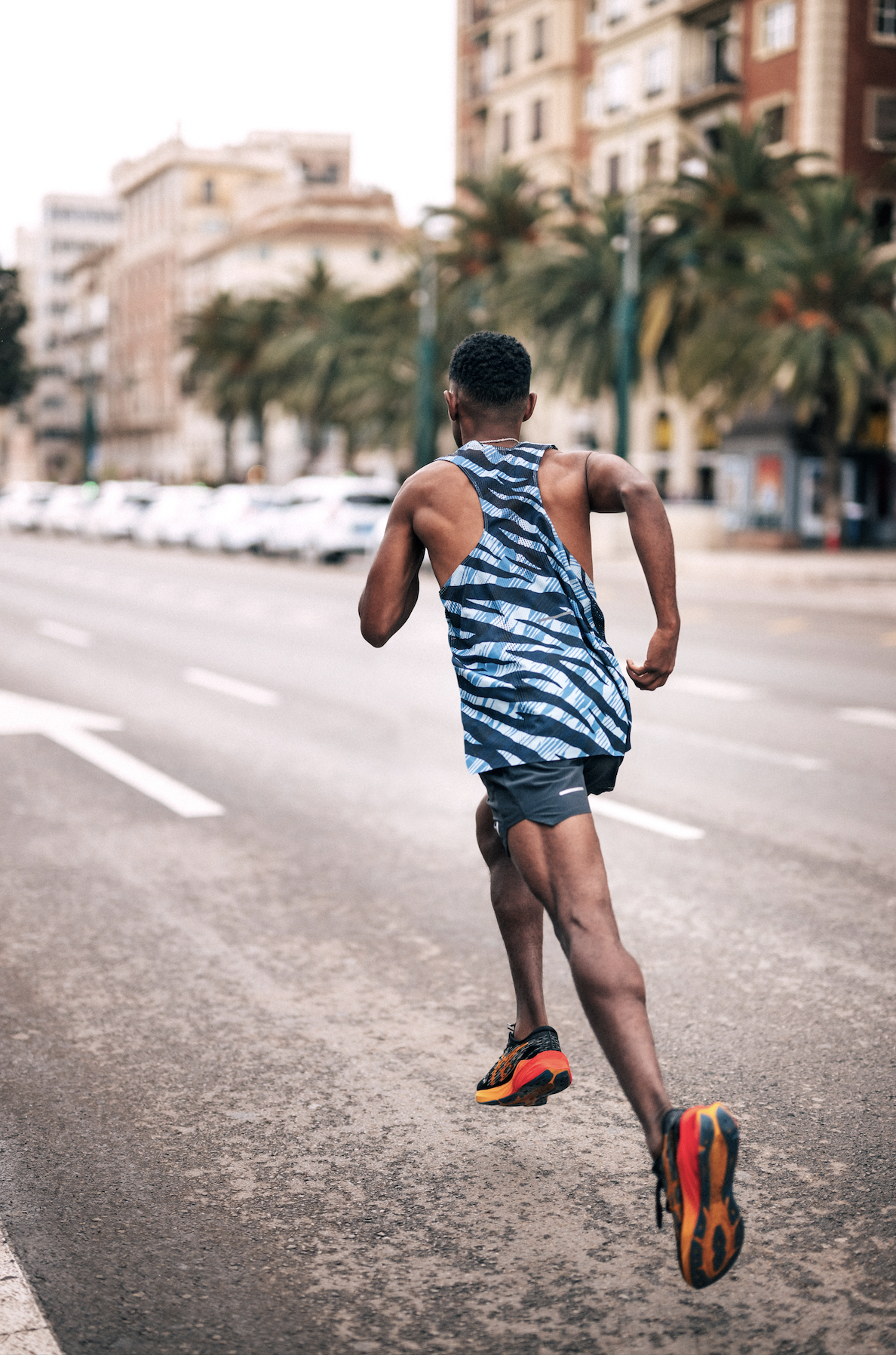Brought to you by ASICS
With the Dublin City Marathon just around the corner, here’s some expert advice to see you through…
Regular runners will know that the right footwear is essential before taking on a big challenge like a marathon.
Not only can a good pair of runners help maximise your performance, but they’ll also go a long way towards preventing injury, which is crucial if you’re running the Dublin City Marathon later this month.
When it comes to choosing the right pair, ASICS are experts when it comes to developing state-of-the-art running shoes, using new innovative technology to help you reach your full potential on the running track.
For experienced runners, the NOVABLAST™ 3 from ASICS could be the footwear solution you’ve been looking for. The new running shoe gives you maximum support while you’re on the track, using new technology to maximise your performance.
The latest model of the popular running shoe is equipped with an extra millimetre FF BLAST™PLUS foam technology at the heel and forefoot, designed to offer a bouncy running experience and a more energised rebound in each step. It’s also approximately 22g lighter than its predecessor, making it a lightweight shoe that can keep up with your active lifestyle and fully support you in meeting your fitness goals.
You can find out more about the NOVABLAST™ 3 here.
But it’s not just running shoes that need to be considered. Any regular runner knows there are some crucial steps that need to be taken before embarking on a long run, and that’s even more important for a challenge as intense as the Dublin City Marathon.
With that in mind, we caught up with Callum Linger, Brand Specialist ASICS Ireland, to put together some top tips for runners taking on the Dublin City Marathon later this month.
Here’s what he had to say…
What should I be doing in the last week leading up to the run?
After months of training and hard work, it’s crucial to make the right choices in the final few days leading up to the run. Callum says one of the most important things to work out is when your last run should be.
“Depending on your tapering plan, your last significant run should be about a week before the race. It should be long enough to keep your body prepped for the 42.195 kilometres. Setting up your training plan with RunKeeper will help you to map out how much you should run in the last week. But if you haven’t been following a training plan, think about cutting your long run by about 50-60%,” he advises.
Your diet in the lead-up to the run is also incredibly important, and Callum recommends including a variety of high-carbohydrate meals (about 8-9 grams for every kilogram of body weight), cutting back on fats and protein to balance out your higher carb intake and avoiding junk food that could adversely affect your running performance.
How can I break in my runners ahead of the marathon?
“It will usually take between 2-3 weeks to break in a pair of new runners,” Callum says, meaning it’s crucial to consider what shoes you’ll be wearing well in advance of the run.
To break in a new pair, Callum recommends wearing them around the house as much as possible, taking notice of any immediate issues like the shoe being too big or small, or any areas where blisters are emerging.
Following that, it can be worthwhile to take them on a treadmill if possible, to evaluate the runners’ performance. If they’re not causing any issues at this point, Callum says you can go ahead and give them a go on the road.
What warm-ups should I be doing right before the marathon starts?
Callum says the right balance of light cardio and stretching is essential for a pre-marathon warm-up.
“Start with a brisk walk to the course or around the start area making sure you are still covered up and keeping warm. 20-30 mins before the start you should start a gentle jog for around 5-10 mins max, then begin some gentle dynamic stretches.
“This involves controlled swinging movements in the area you’re about to use in your particular sport. The moves will take a body part, joint and muscle past its usual range of movement, preparing you for the race ahead. For example, hip opener, leg swings, walking hamstring stretch, arm swings and torso rotations. These should all be done on both legs and should take no more than 5 mins.”
What steps can I take to avoid pain or injury during the run?
Callum says you need to work on strengthening your body to avoid injury before a run. While warm-up exercises and dynamic stretches are crucial, he also says you should mix up your running style in the lead-up to the marathon.
“One day you’re strengthening your lower legs on a hilly run, the next you’re improving your balance on an adventurous and scenic trail run. Make sure you are eating enough calories in order to fuel that specific session too.”
There’s also something to be said for rotating your running shoes in the lead-up to the event. Callum says research has showed runners who had used a mix of different shoes had a lower risk of injury compared to those who ran in just one pair of shoes, due to activating different muscle groups depending on the type of shoes you go for.
Speaking of shoes, Callum says the right runners and compression gear can go a long way towards preventing injury. “You’re at higher risk of injury in the rain and ice, whether that’s slipping or turning an ankle. So make sure you always have a solid footing with an outsole designed to grip the surface beneath you.”
“The right training gear will support you and reduce muscle fatigue as you run, lessening the chance of making a mistake,” he adds.
The NOVABLAST 3 shoe is available in-store and online at asics.ie or elverys.ie now, for €150
Brought to you by ASICS







































